William Tell Air Combat Competition Crowns Its Winners
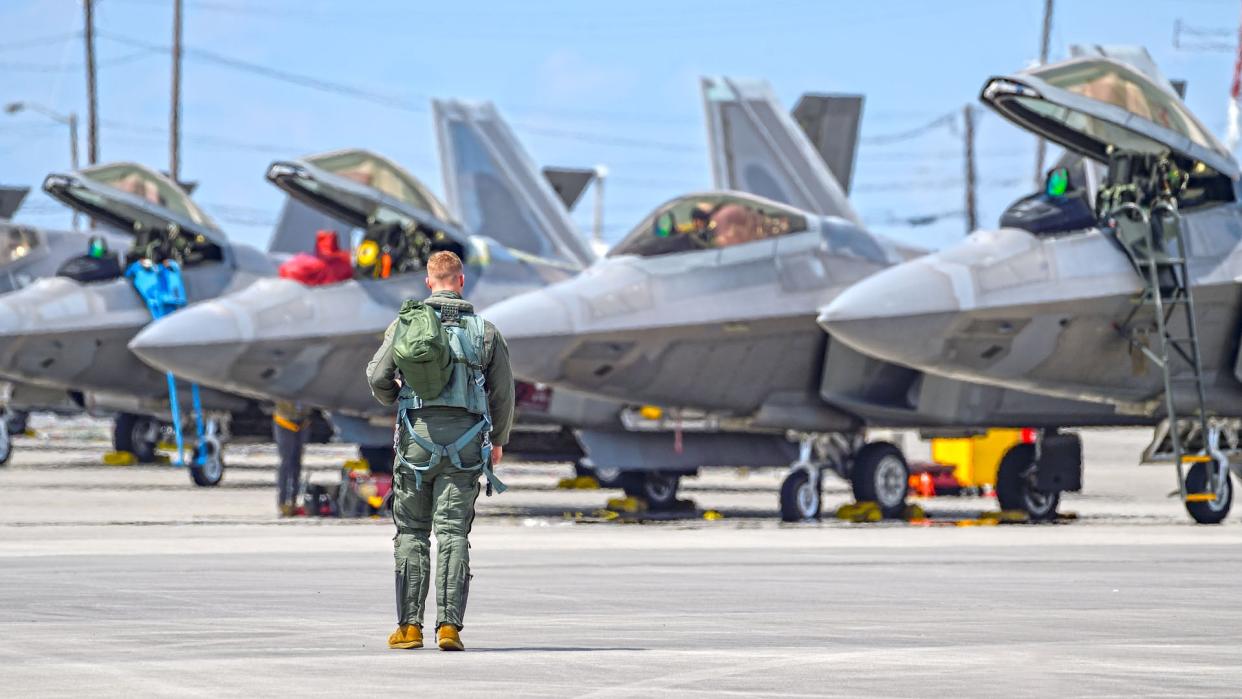
The U.S. Air Force’s first William Tell exercise in 19 years came to a conclusion on Friday, September 15, 2023, at the Air Dominance Center in Savannah, Georgia, marking the culmination of five days of exhaustive air combat competition. The week-long event included a wide range of combat-representative tasks to challenge nine USAF fighter wings — and we now know the winners.

Editor's Note: Welcome to the third and final installment in our three-part series on the rebirth of the legendary William Tell fighter competition. Be sure to read all about the colorful history of William Tell and how it has been adapted for the cutting-edge of air combat in our first installment here and our on-the-scene report on all the action as the exercise was underway here.
Aircrews, maintainers, intelligence officers, command and control specialists, and weapons loaders from across the active-duty, Air National Guard (ANG), and Air Force Reserve Command (AFRC), competed against each other in air combat missions, including live gun firing, and in maintenance and support challenges. In the air the teams had to come together in partnerships to prove their mettle when it comes to Fighter Integration — working as a cohesive warfighting pack to defeat a complex adversary. The winners of this particular element of the competition took home the coveted overall William Tell trophy.
Eyes were permanently on the participants from three F-22 Raptor, three F-35 Lightning II and three F-15 Eagle and Strike Eagle wings, with each member having to demonstrate their skills on every single mission from maintainers seeing off jets on their sorties to a high-profile missile loading competition that was fought-out through the week. William Tell '23 was designed, and executed, as a thorough examination of each fighter wing’s warfighting capabilities.
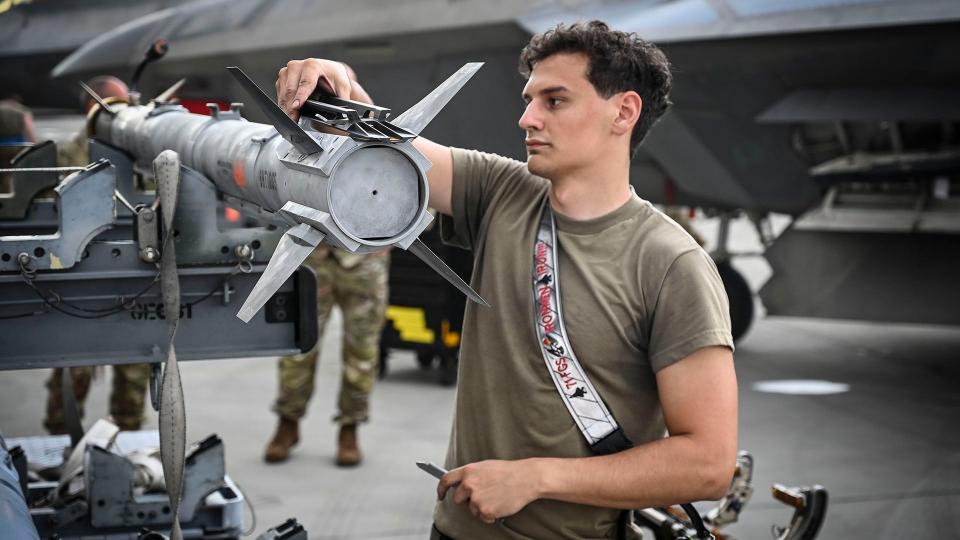
Every event was carefully scrutinized by a 28-person team of 'White Force' evaluators, many of whom were USAF Weapons School graduates. Each team was graded, and their running totals were posted daily on a large digital screen at the venue, as well as on Air Combat Command’s (ACC’s) social media accounts. There was no chance to hide from the results. You can read all the details of the various competition categories in The War Zone’s detailed coverage of William Tell ‘23.
“Rule number one for fierce competitors is when the competition is over, you celebrate and congratulate the winners,” said Gen. Mark "Grace" Kelly, commander of ACC. Kelly had approved the reactivation of William Tell earlier this year, with a small team then tasked with bringing the wide-ranging event together. This included an impressive set of new competition trophies supplied by industry partners.
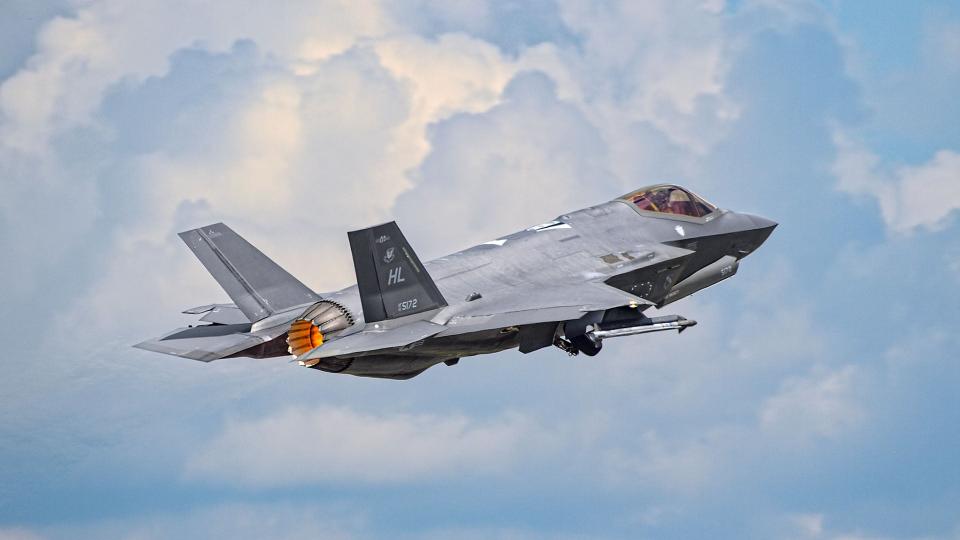
The winners were revealed at the William Tell 2023 closing ceremony on the final day of the exercise, with the successful teams having now been formally announced by Air Combat Command.
William Tell 2023 winners:
Maj. Richard I. Bong Fighter Integration Trophy
3rd Wing, JB Elmendorf-Richardson (F-22)
366th FW, Mountain Home AFB (F-15E)
388th/419th FWs, Hill AFB (F-35A)
Lt. Col. James H. Harvey, III Top F-15 Wing Award
104th FW, Barnes ANGB, Massachusetts (F-15C)
Capt. Eddie Rickenbacker Top F-22 Wing Award
1st FW, JB Langley-Eustis
Brig. Gen. Robin Olds Top F-35 Wing Award
158th FW, Burlington ANGB
Big Eye Task Force Top C2 Wing Award
552nd ACW, Tinker AFB, Oklahoma
Col. Jesse C. Williams Top Intel Tradecraft Wing Award
1st FW, JB Langley-Eustis
CMSgt. Arvol “Pete” Lusse Maintenance Team Award
1st FW, JB Langley-Eustis
Weapons Load Competition Overall Winner
104th FW, Barnes ANGB, Massachusetts
Top F-15 Crew Chief
366th FW, Mountain Home AFB
Top F-22 Crew Chief
1st FW, JB Langley-Eustis
Top F-35 Crew Chief
158th FW, Burlington ANGB
F-15 Superior Performer
104th FW, Barnes ANGB, Massachusetts
F-22 Superior Performer
3rd Wing, JB Elmendorf-Richardson
F-35 Superior Performer
158th FW, Burlington ANGB
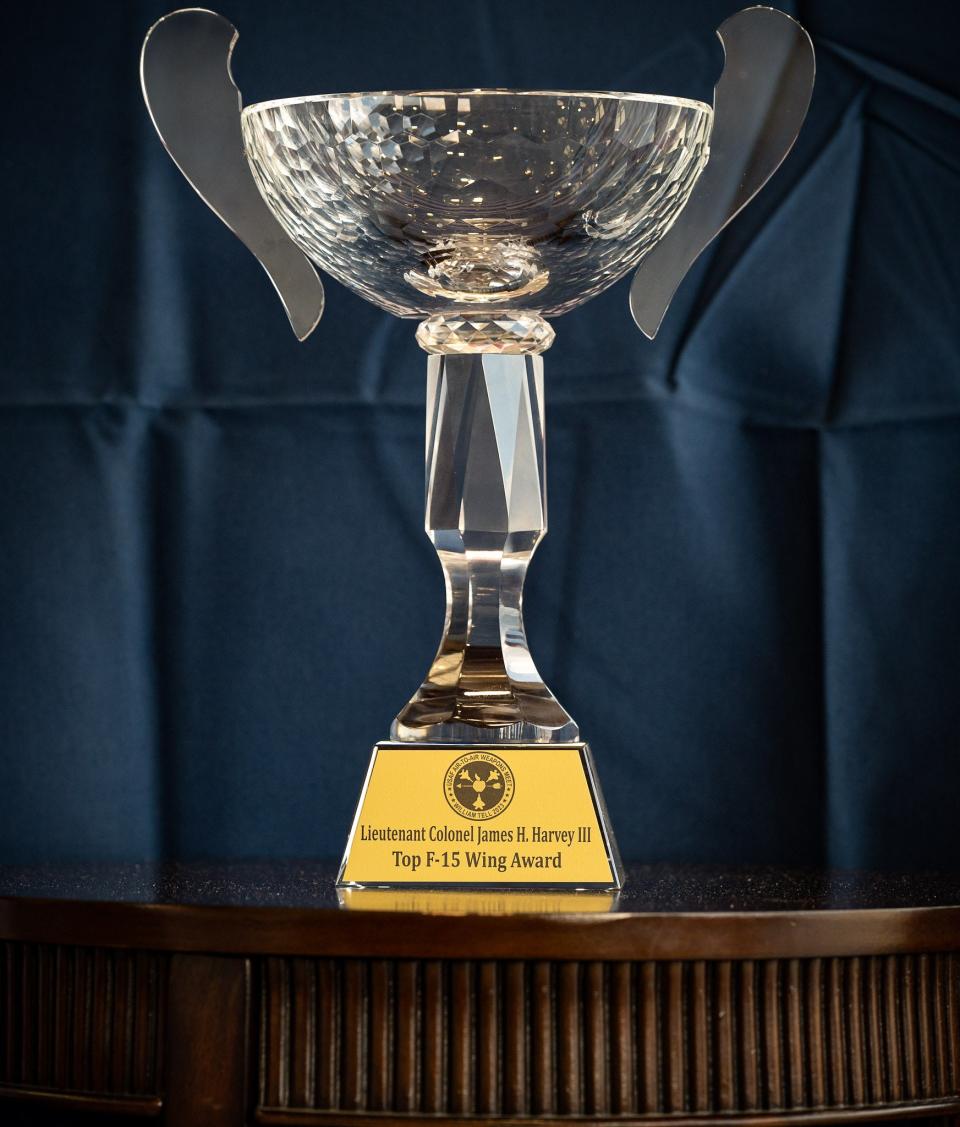
The top William Tell award, the Lockheed Martin-sponsored Maj. Richard I. Bong Fighter Integration Trophy, was shared between the adjudged strongest Fighter Integration team, which comprised of the F-22s of the 3rd Wing at JB Elmendorf-Richardson, Alaska, the F-15Es of the 366th FW at Mountain Home AFB, Idaho, and the F-35As of the 388th/419th FWs from Hill AFB, Utah.
The 1st FW from Joint Base Langley-Eustis was judged to be the top F-22 wing, fighting off stiff competition from the 3rd FW at Joint Base Elmendorf-Richardson in Alaska when it came to Air Combat Maneuvering (ACM), Basic Fighter Maneuvers (BFM), and aerial gunnery. Indeed, the result of this particular competition is understood to have gone to the wire in the very last mission, with the 1st FW Raptors coming out on top. The visiting F-22 units from the Pacific Air Forces' 154th FW Hawaii Air National Guard and 3rd Fighter Wing at Elmendorf in Alaska both borrowed jets from the 1st FW for William Tell.
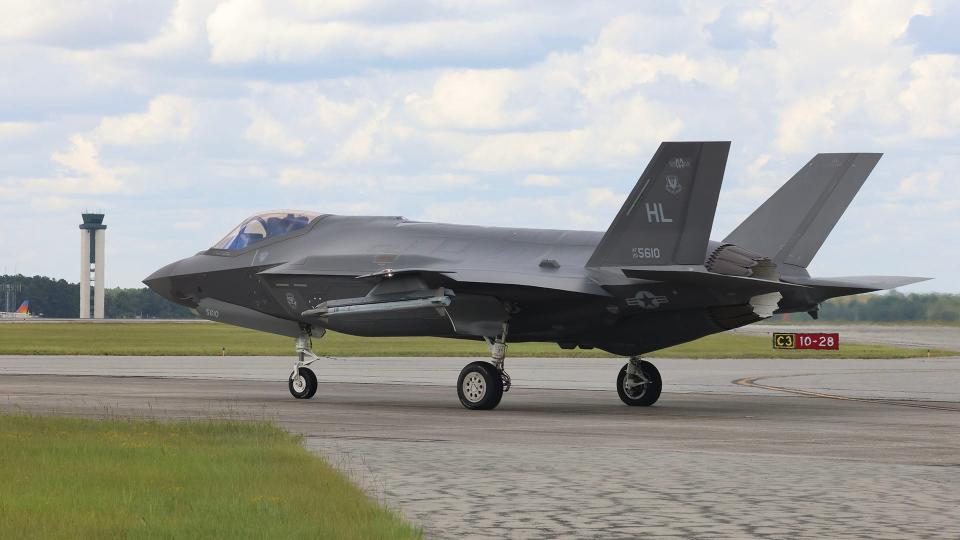
The Vermont ANG’s 158th FW proved to be a strong team in the F-35 head-to-head competitions, securing the Brig. Gen. Robin Olds Top F-35 Wing Award, Top F-35 Crew Chief and Superior Performer awards, as well as making it to the grand final of the weapons load competition, beating the two teams from Hill AFB.
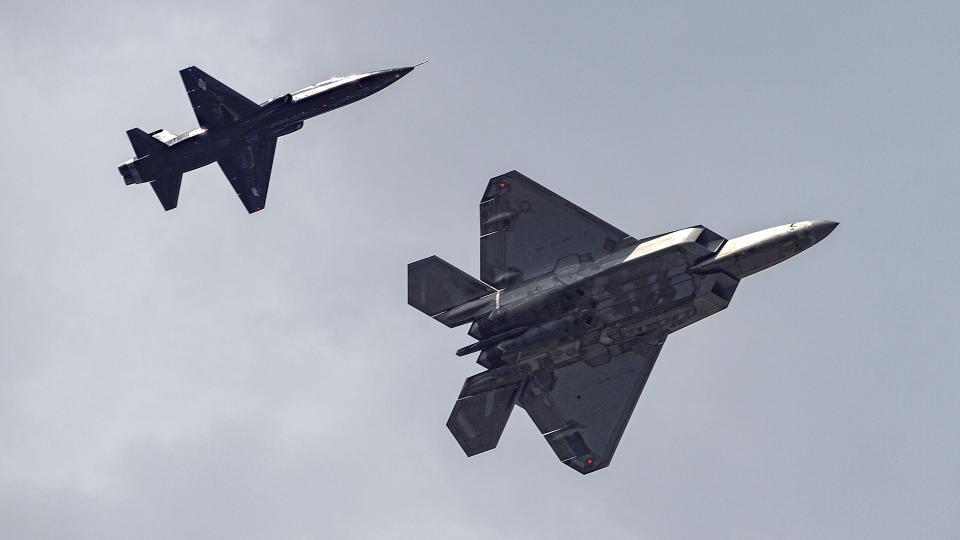
When it came to the Eagles, the Massachusetts ANG’s 104th FW was the big winner. They notably won the new Lt. Col. James H. Harvey, III Top F-15 Wing Award, as well as the overall weapons loading competition, beating both the F-22 and F-35 cadres in quickly and efficiently loading up their jets with a complement of air-to-air weapons.
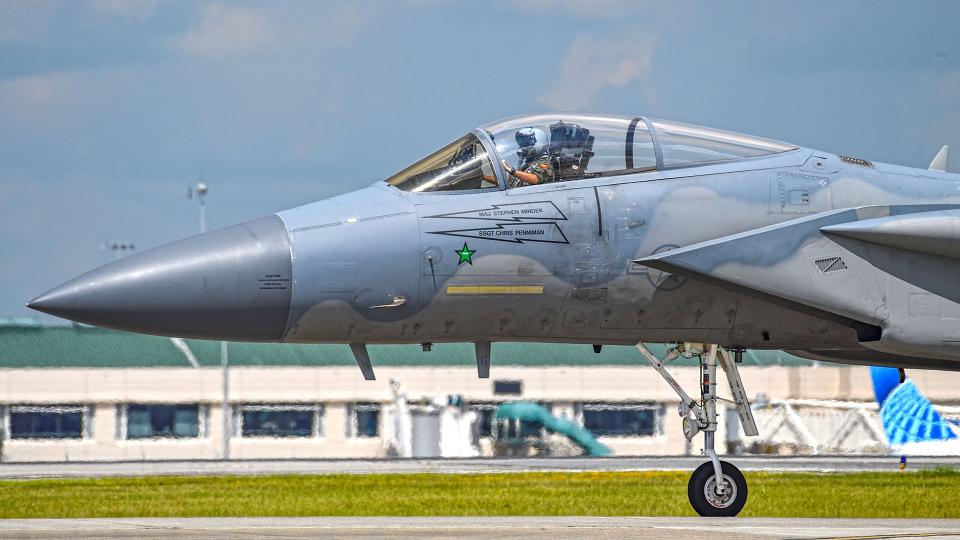
“I served as the backup pilot to our four competitive pilots we brought to the exercise,” Lt. Col. Matthew “Beast” Tannis, told The War Zone, during a media event in the thick of the William Tell action. Tannis — an experienced 1,500-hour F-15C pilot — was the William Tell detachment commander for the sole F-15C wing that attended the event. He added: “The four team pilots are flying every single day and scoring points in a variety of different competitions from an air-to-air perspective.” You can read all the details about the various flying missions here in our comprehensive coverage of Exercise William Tell.
With a 19-year hiatus, few on the respective teams had experience of participating in a William Tell. Tannis explained how the teams tried to get ahead of the game to be ready for whatever lay ahead. “They [the exercise organizers] kept on releasing these little results and we were just eating it up and getting in the mindset. I think before that we were just like, well, we will do whatever. But once you drop into it and start thinking things through, these guys really got in the zone with their heads down doing the work. It was really cool to see that transformation.”
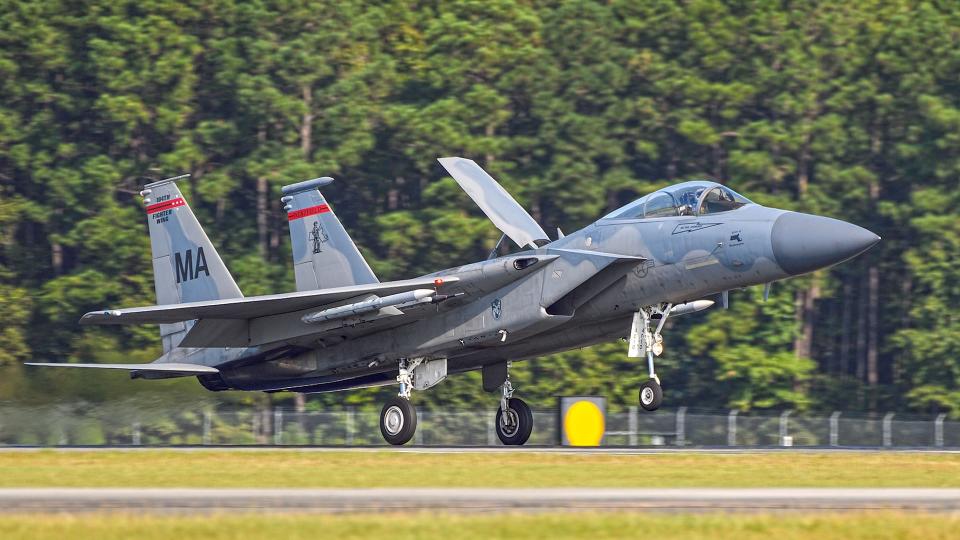
The four ANG F-15C pilots from 104th FW began William Tell week flying Fighter Integration missions, where they teamed up with four-ships of F-35s and F-22s. “We all fought the same amount of “Red Air” [aggressor forces]. The pilots were graded on teamwork, performance, weapons employment and whether they saved the day or not, and in what kind of manner they did that. That was a long-range fight, which was followed by close-range [fights] like Air Combat Maneuvering [ACM]. That is two or more of our aircraft going against a single bandit, which is what we call 'cleaning up the merge.' We kill the bandit and turn around to find another bandit. We do that as much as we can before we run out of gas.”
“It’s a really dynamic environment with no scripts, so it’s on you to figure out the situation and respond accordingly. We then did Basic Fighter Maneuvering [BFM], which was a 1-v-1 classic dogfight where you point at the other guy and do everything you can to employ weapons against that person while simultaneously denying them the opportunity to employ against you.”
The last flying phase of William Tell ‘23 was the live fire aerial gunnery. “It was a live bullet banner shoot,” Tannis enthused. “The banner was towed behind a Learjet, strung a few hundred yards behind the jet. I always like to compare it to skeet shooting, where you see a target going out and you have to lead-turn it and pull the trigger, except you’re doing it while flying a fighter, so have to lead-turn while the target is flying and you are doing that at much higher airspeeds and you’re pulling Gs the entire time, so it’s a very difficult thing to do and there is an art to it.”
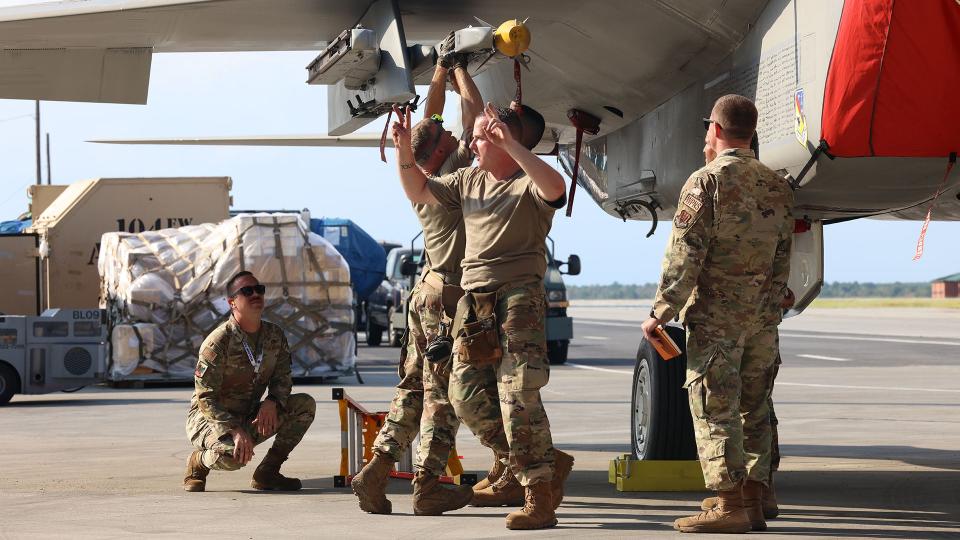
Even though the 104th FW is flying roughly 40-year-old F-15Cs, these experienced Guardsmen proved that they still bring a lot to the fight. “We did FI [Fighter Integration] with the F-22s and F-35s because it balances each of the platform's capabilities,” explained Tannis. “We have the ability to carry a lot of weapons and we can get very fast and we are not necessarily concerned with other aircraft seeing us because we know they can see us, so we do certain things to stay a little further away from them.”
“The 5th-Gen aircraft [like the F-35], they are not easily seen, so they can get closer [to the enemy]. The basics of it is that there are certain times where you want to use 4th-Gen aircraft to be effective at certain ranges, and there are certain ranges that you want to use 5th-Gen. The problem is that if you just use one element at a time then you are not good at both and eventually the bad guys are going to get to a spot where you are going to have to kill them before they kill you, and so leveraging each platform’s capabilities at the right time is exactly what we are practicing.”
“Events like this, where you can practice together in the same airspace at the same time, is a rare opportunity because everyone is busy. To gather in one spot and do it for real with a scoring system where you get feedback and more importantly a debrief, [is amazing]. The debrief is where you see what you did wrong, you identify the error, you prove the error to the pilot and then offer some instruction as to why the error was made — finally stating the impact. The goal being to provide instruction to take back home and learn from it, so next year or whenever we do this again, we'll just get better and better.”
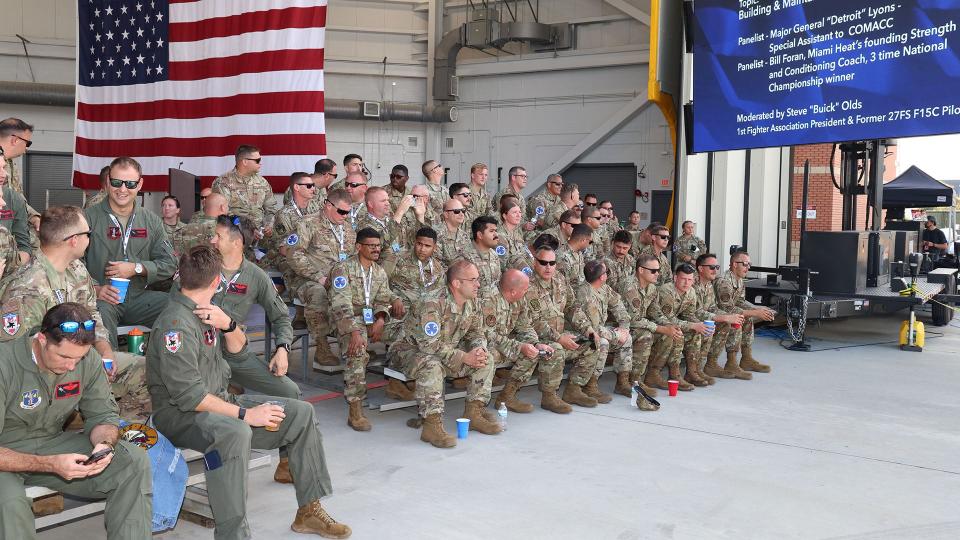
The War Zone was able to witness the weapons loading heat between the three visiting F-15 wings. During the timed event, each of the wings had a three-person load crew that had to safely and quickly load two AIM-120 Advanced Medium-Range Air-to-Air Missiles (AMRAAMs) and two AIM-9X Sidewinders onto their aircraft. The “three-man” for the 104th FW was SSgt. Jason Gaydette, who explained. “As the 'three-man' I have to inspect all of the munitions for serviceability to make sure they are safe to load onto the aircraft. I am also responsible for driving the missile loader up to the aircraft. This competition was the best thing I have done so far in my career.”
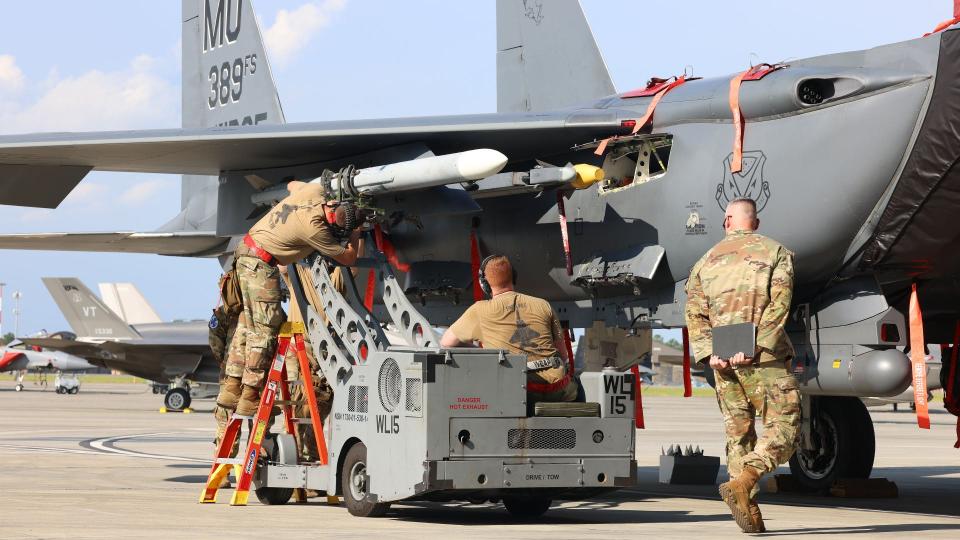
With the three F-15s positioned outside the new Air Dominance Center hanger, the competition kicked-off in front of a raucous crowd of a few hundred people of the William Tell team on bleachers on a hot and humid Savannah afternoon. With music blaring and a huge screen set up to watch elements of the event up close, onlookers observed as the team from the 104th FW beat the competition from Mountain Home AFB and Seymour Johnson AFB. With the heat won, the team, soaked in sweat, were mobbed by their squadron mates for celebratory hugs and high-fives.
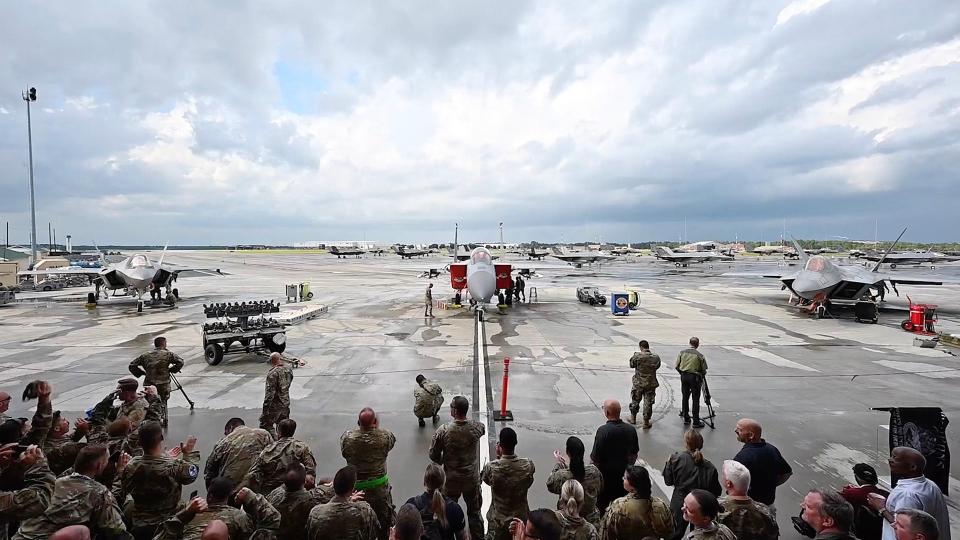
The 104th proceeded to the Thursday loading final against the 1st FW F-22s and 158th FW load teams, and again came out on top to win the overall Weapons Load Competition. The success of the 104th FW at William Tell underscores the value of experience, with many of these seasoned ANG personnel having many years of experience with their aircraft type.
Without taking anything away from the Massachusetts team, loading AMRAAMs onto an F-15’s external weapons stations is potentially less time-consuming than carefully easing the same weapons into the tight, low-slung internal weapons bays of the F-22 and F-35. Nevertheless, the sole F-15C team showed that they absolutely had their part to play at William Tell ‘23 and deserved their spoils.
Taking the Lt. Col. James H. Harvey, III Top F-15 Wing Award involved the 104th FW beating both F-15E teams, both of which fly newer jets and which feature pilot and Weapons Systems Officer aircrew teams. The Massachusetts ANG is slated to trade its aging F-15Cs for F-35As from 2026, ending what is clearly a very proud and potent partnership with the Eagle.
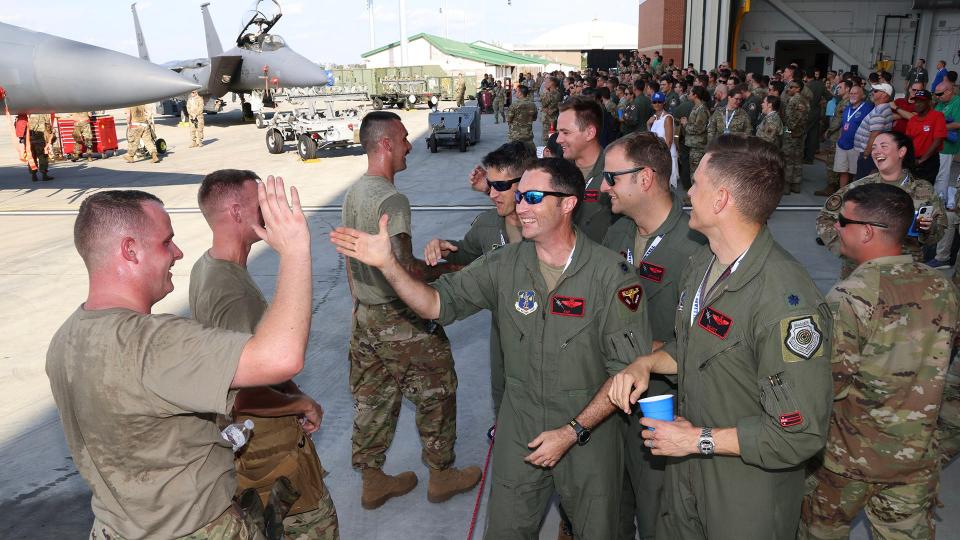
The mandate behind the return of William Tell is a desire to push the USAF’s warfighting skills to a new level. One of the driving forces behind the re-establishment of William Tell was three-time “MiG-killer” Col. Cesar “Rico” Rodriguez. “William Tell is designed to push the envelope of the warfighter, and the difference is that we are doing it in a graded event. It’s not just about the pilots, but a whole team competition. It’s a slightly different spin to a Red Flag, for example, but it reflects the battlespace we need to be preparing for,” Rodriguez told The War Zone.
The current centerpiece of USAF air dominance is the F-22 Raptor, but William Tell ensured that while the F-22s would go up against one another in a dogfight competition, they would also integrate in a combined fight with the F-15s and F-35s. “Lockheed Martin recognizes the William Tell competition as being vital to maintaining the USAF’s competitive edge and is proud to serve as the title sponsor,” commented O.J. Sanchez, former F-22 pilot and now Lockheed Martin’s Vice President and General Manager of its Integrated Fighter Group.
Reflecting on the week of William Tell, exercise director Maj. Garrett “Dodge” Getschow, said: “Mission success for us is that we bring this exercise back 2024 or 2025 as an enduring competition.” Col. Rodriguez expands his ambition even further. “I’d love to see the global F-35 community be involved in future iterations of William Tell. We won't fight by ourselves, so it's time to take the coalition to the next level. So, I think 'Willy Tell' will grow for air dominance, and bring the history of the USAF to life.”
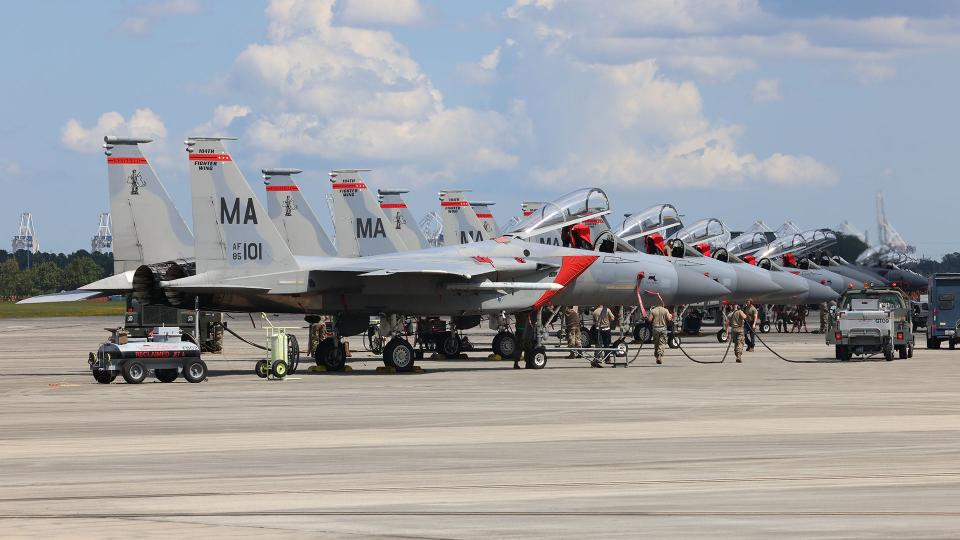
“Take the camaraderie, lessons learned and the spirit of competition from this week back home,” said Lt. Gen. Russ Mack, deputy commander of ACC, to the participating teams as they prepared to depart Savannah. “Challenge yourselves to improve your units, improve your units to increase mission readiness, and increase mission readiness to develop a culture of competitive endurance.”
“We must keep our adversaries continually arriving at the realization that today is not the day,” said Mack. “Not the day to mess with the United States of America and not the day to mess with the U.S. Air Force. The best in the world and second to none.”
The success of William Tell ‘23 will hopefully lay the foundations for this to become at least a biennial event. Teams will again go head-to-head, and there will be winners and losers. Next time, the invited teams may have a better idea of what lies ahead, and they may be able to arrive even better prepared — driving up the standard even further. Future iterations of William Tell could feature increasing numbers of teams and more complex scenarios as the event develops and becomes a regular feature of the USAF calendar.
William Tell will return. Fight’s on!
Editor's note: Our sponsorship partner had no editorial involvement in this article.
Contact the editor: tyler@thedrive.com

